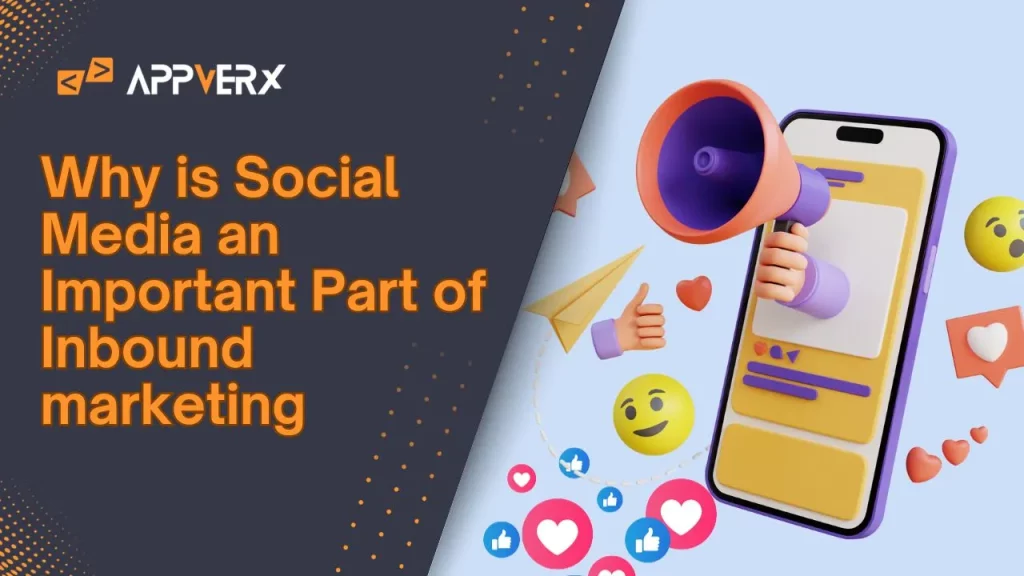The synergy between social media and inbound marketing has become increasingly evident in the ever-evolving digital marketing landscape. This article explores the intrinsic connection between social media and inbound marketing, delving into the intricacies of leveraging platforms for successful inbound strategies.
Introduction
Definition of Inbound Marketing
Inbound marketing aims to attract, engage, and delight customers by focusing on their needs. It revolves around creating valuable content to attract potential customers rather than forcefully pushing out brand messages.
Significance of Social Media in Inbound Marketing
Social media platforms are powerful channels for implementing inbound strategies, facilitating brand awareness, relationship building, and content distribution.
The Basics of Inbound Marketing
Understanding inbound marketing fundamentals is crucial before exploring its relationship with social media.
- Attraction: Inbound marketing relies on compelling and relevant content to attract the right audience.
- Conversion: Converting visitors into leads is the next step, emphasizing the importance of engaging content and compelling calls to action.
- Closing: Turning leads into customers involves nurturing relationships, a task where social media plays a pivotal role.
- Delighting: Inbound doesn’t end at the purchase; it extends to delighting customers, encouraging loyalty and advocacy.
The Rise of Social Media in Marketing
Social media’s evolution has significantly impacted consumer behavior, influencing purchasing decisions and brand perceptions.
Evolution of Social Media
From the early days of social networking, social media has transformed into a dynamic marketing tool.
Social Media’s Impact on Consumer Behavior
Consumers increasingly use social media marketing for product research, recommendations, and real-time interactions.
Social Media as an Inbound Marketing Tool
Businesses must strategically incorporate social media into their inbound marketing arsenal to maximize the benefits.
- Creating a Presence: Establishing a solid social media presence is foundational for inbound success, creating brand visibility and credibility.
- Building Relationships: Social media facilitates authentic engagement with the audience, forming relationships.
- Targeted Content Distribution: Strategically distributing content on social media ensures it reaches the right audience segments, aligning with inbound principles.
- Leveraging Social Listening: Monitoring conversations on social platforms enables businesses to adapt their strategies based on audience feedback.
What is Social Selling the Inbound Way?
Social selling becomes a potent social media strategy for driving conversions when integrated with inbound marketing.
Defining Social Selling
Social selling is leveraging social media to identify, connect, and nurture potential customers.
Integration with Inbound Marketing
Aligning social selling efforts with inbound methodologies ensures a seamless and holistic approach to customer acquisition.
Social Media’s Connection to Inbound Marketing Platforms
Integration strategies between social media and inbound marketing platforms are pivotal for efficiency.
Integration Strategies
Connecting social media channels with inbound marketing platforms streamlines marketing efforts, ensuring cohesive messaging.
Streamlining Marketing Efforts
Unified data and analytics across platforms enhance decision-making, allowing for data-driven inbound strategies.
Best Practices for Social Media Inbound Marketing
Success in social media inbound marketing requires adherence to best practices to maximize impact.
Content Relevance and Consistency
Creating relevant and consistent content establishes trust and keeps the audience engaged.
Engaging with the Audience
Brand loyalty and connection can be enhanced by engaging with the audience through comments, messages, and polls.
Utilizing Visual Content
Visual content, such as videos and infographics, increases engagement and enhances the overall user experience.
Monitoring Analytics
Regularly monitoring social media analytics provides insights into what works and allows for continuous optimization.
Benefits of Social Media for Inbound Marketing
Understanding the benefits helps businesses appreciate the value of social media in their inbound strategies.
Increased Brand Visibility
Social media platforms amplify brand visibility, exposing businesses to a broader audience.
Enhanced Customer Engagement
Real-time interactions on social media foster meaningful connections, leading to enhanced customer engagement.
Improved Lead Generation
Social media facilitates targeted lead generation by connecting users interested in the products or services offered.
Real-time Feedback
Immediate feedback on social media allows businesses to adapt quickly, refining their strategies based on audience reactions.
Inbound vs. Outbound Marketing
Contrasting inbound and outbound marketing approaches emphasizes the shift towards customer-centric strategies.
Contrasting Approaches
While outbound marketing interrupts the audience with messages, inbound marketing seeks to pull in audiences with valuable content.
Effectiveness in the Digital Age
In the digital age, where consumers have more control over what they see, inbound marketing proves more effective in building lasting connections.
The Perplexity of Social Media Inbound Marketing
Navigating the complex landscape of social media requires businesses to adapt to evolving algorithms and user behaviors.
Navigating the Complex Landscape
Ever-changing algorithms and trends on social media platforms necessitate agility and adaptability in inbound strategies.
Adapting to Algorithm Changes
Understanding and adapting to algorithm changes are essential for maintaining visibility and engagement on social media.
Bustiness in Social Media Strategies
Amidst the crowded space of social media, businesses must find unique ways to stand out and capture audience’s attention.
Standing Out in a Crowded Space
Creativity and innovation are vital to breaking through the noise and capturing the audience’s attention.
Creating Impactful Content
Brand recall is increased when content resonates emotionally and intellectually with the audience.
Crafting Engaging Content
Creating engaging content involves storytelling and the integration of multimedia elements.
The Role of Storytelling
It is easier for the audience to remember compelling narrative content.
Incorporating Multimedia
Images, videos, and infographics enhance the content experience, catering to diverse audience preferences.
Social Media Trends and Future Insights
Anticipating trends and future developments in social media ensures businesses stay ahead of the curve.
Emerging Platforms
Exploring and experimenting with emerging social media platforms keeps businesses adaptable to changing audience preferences.
Anticipated Developments
Predicting and preparing for developments in social media algorithms and features positions businesses for sustained success.
Read more about: How to Market a Book on Social Media.
Conclusion
Integrating social media into inbound marketing strategies is necessary in the digital age. Social media is a dynamic tool, facilitating attraction, engagement, and delight in the inbound marketing methodology. As technology evolves, businesses must stay attuned to the emotional landscape of social media to maintain a competitive edge.
Frequently Asked Questions (FAQs)
How does social media complement inbound marketing?
Inbound marketing leverages social media to distribute content, engage customers, and build relationships.
What are the critical components of a successful social media inbound marketing strategy?
Key components include creating a solid social media presence, engaging content, active audience interaction, and analytics monitoring.
Can social media genuinely replace traditional outbound marketing methods?
While social media has become a powerful marketing tool, a balanced approach that integrates both inbound and outbound methods is often the most effective.
How often should businesses update their social media content for optimal results?
The frequency of updates depends on the platform and audience, but consistency is critical for maintaining engagement.
Are there industries where social media is more beneficial for inbound marketing?
Social media can benefit many industries, but those with visually appealing products or services often find more success.
What role does social listening play in social media inbound marketing?
Social listening involves monitoring online conversations, helping businesses understand customer sentiments and adapt their strategies accordingly.
How can businesses measure the effectiveness of their social media inbound marketing efforts?
Social media inbound marketing efforts can be measured using engagement, click-through, and conversion rates.
What are the potential challenges of integrating social selling with inbound marketing?
Challenges may include aligning strategies, training sales teams, and adapting to the evolving nature of social media platforms.


